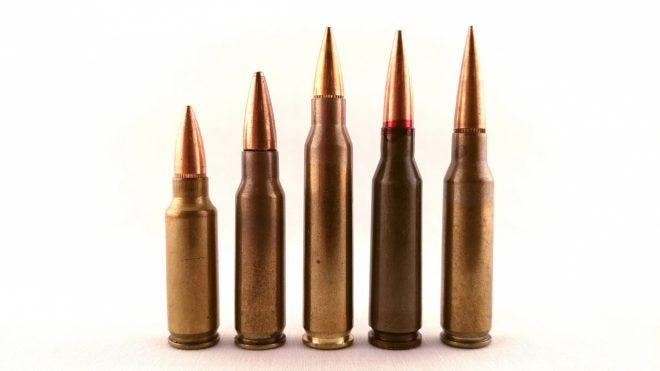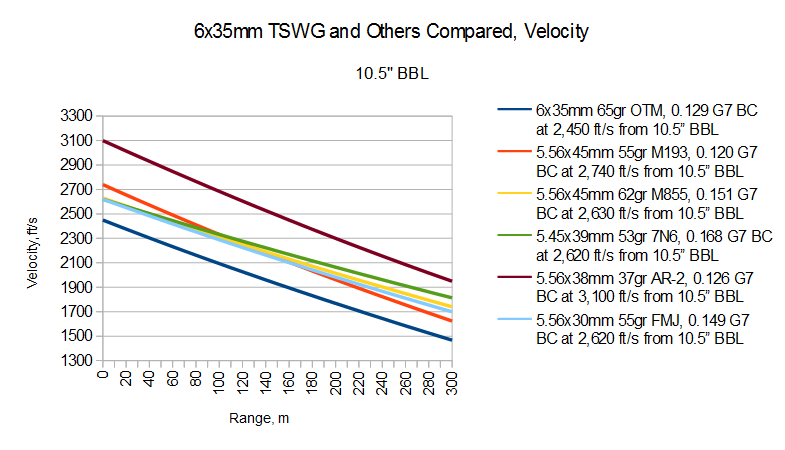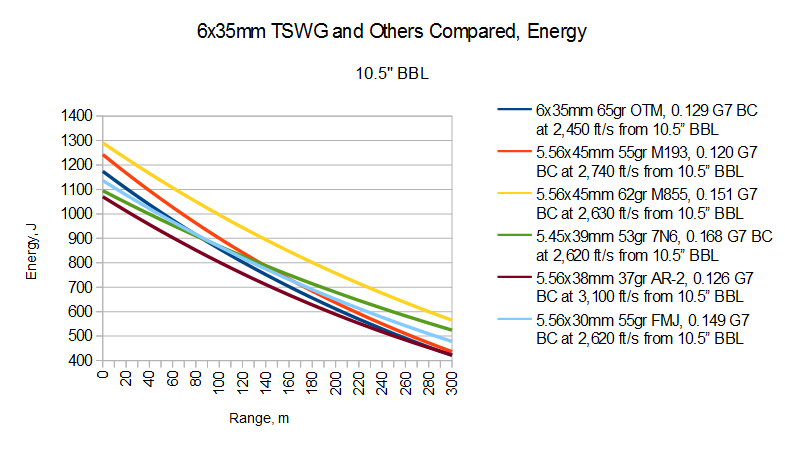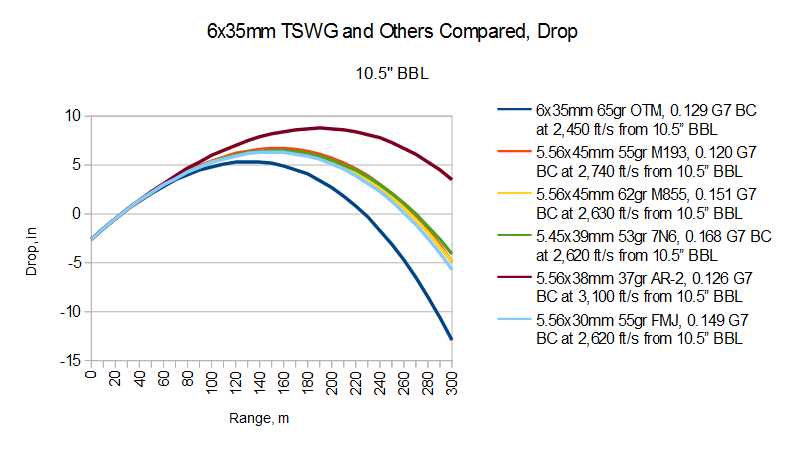When I started the Modern Intermediate Calibers series, I did not expect it to grow as large as it has. The initial plan was for 7 major calibers, which grew into well over 20, and the spinoff Modern Personal Defense Weapon Calibers, which itself will have at least 20 entries.
So, I threw the 6x35mm KAC into the series with other intermediate calibers, with some nominal graphs that were intended to be put together later in an interactive graph that would allow readers to compare whatever calibers they liked. However, due to shortcomings in my Excel wizardry, and the ongoing nature of the Modern Calibers series, I’ve not gotten there yet, which means the original 6×35 KAC article really leaves a lot to be desired. Today we’re revisiting it, and comparing it to a few other calibers used in similar roles.
Let’s see how it stacks up!
Astute viewers may note the odd 10.5″ barrel length for 5.45×39 and 5.56×38 FABRL, this is to give an even comparison. The 5.56x38mm FABRL data for this length is extrapolated based on its case volume and projectile weight, as compared to .221 Fireball when fired from the same length barrels, while the 5.45×39 data is taken from the chronograph readings my friend Adam took of his 10.5″ AK build.
What this data shows is that from a ballistic perspective the 6x35mm TSWG is not a very strong performer in any respect when compared to its stablemates. Compared to other rounds in its class, it offers less in all three departments: Velocity, retained energy, and drop. Also, contrary to KAC’s claims about the round, it doesn’t match the performance of 5.56mm at the muzzle. The 2,630 ft/s velocity value for the 10.5″ barrel is close to results published in multiple sources, and is actually not even close to the most impressive published velocity I could find (which was 2,616 ft/s for a 70gr Barnes VOR-TX! Yow!). Therefore, I think it’s fair to say that KAC softballed the 5.56mm a little bit in their claim that the 6x35mm equals its performance from that barrel length. Still, at the muzzle there doesn’t seem to be anything terribly wrong about its performance, for a cartridge of that size and weight.
However, at range, the 6x35mm really fails to compete. Even the much smaller 5.56mm MARS out-performs it for retained energy at 300m, as does the 5.56mm FABRL with its much lighter bullet. Given this, I can’t really think of a compelling reason for the 6x35mm to exist; the 5.56mm out-performs it and is compatible with standard M4 Carbines, while the even smaller 5.56mm MARS out-performs it, too!
 Your Privacy Choices
Your Privacy Choices



